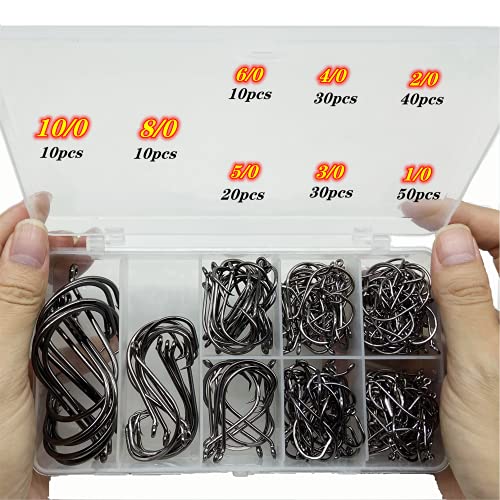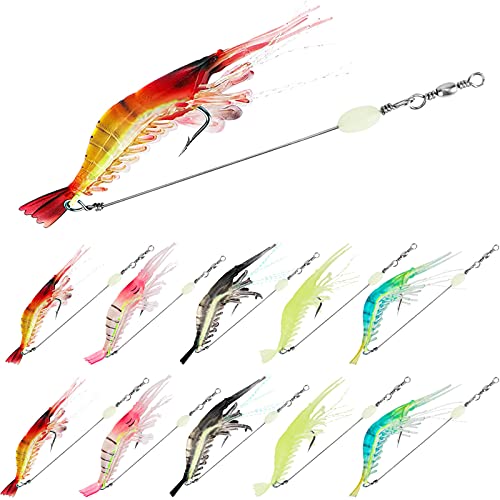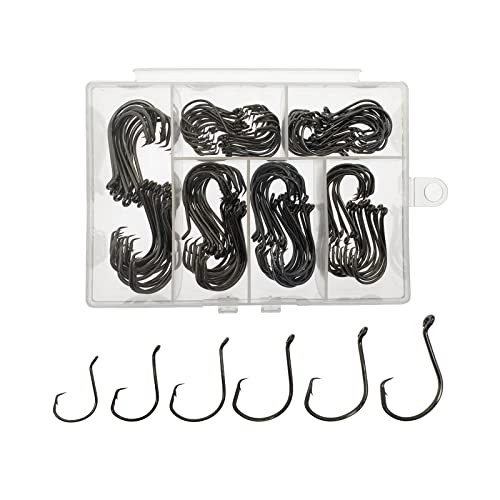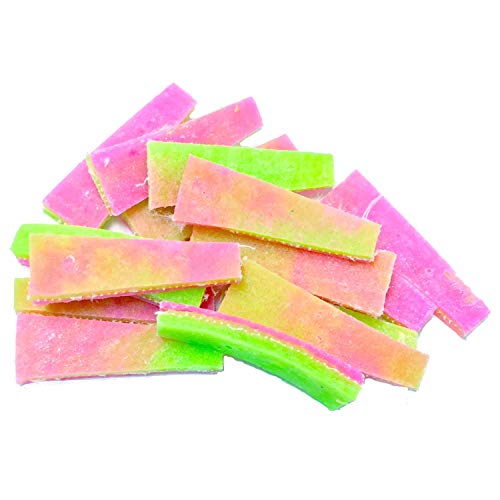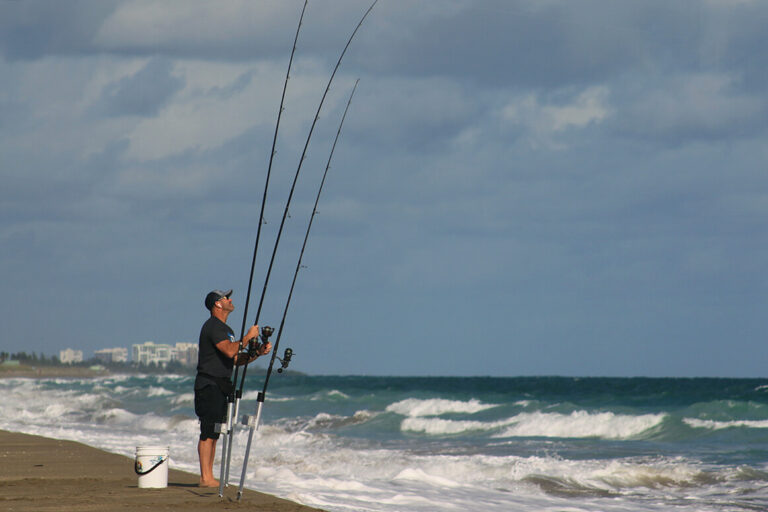To use fish finders for surf fishing, attach the device to your fishing line, cast it out into the water, and monitor the display for fish activity. With the help of fish finders, you can easily locate schools of fish, underwater structures, and depth variations, enabling you to target your casts more effectively and increase your chances of catching fish.
Surf fishing is a popular technique that involves casting a line from the shore into the waves, targeting fish that inhabit the surf zone. Fish finders are valuable tools for surf fishermen as they provide real-time information about what is happening underwater.
By understanding how to effectively use fish finders for surf fishing, you can improve your fishing success and make the most of your time by focusing on areas where fish are present. This guide will walk you through the basics of using fish finders for surf fishing and provide tips to maximize your results. So, let’s dive in and learn how to utilize this technology for a more productive and enjoyable surf fishing experience.

Credit: www.onthewater.com
Understanding The Basics Of Surf Fishing
Importance Of Fish Finders In Surf Fishing
Fish finders are an essential tool for any angler, especially when it comes to surf fishing. They provide valuable information about what lies beneath the surface, helping you locate fish more effectively. Here are some key points to understand the importance of fish finders in surf fishing:
- Improved efficiency: With a fish finder, you can quickly identify the areas where fish are congregating, saving you time and effort. This means less time searching for fish and more time casting your line.
- Accurate depth reading: Fish finders provide real-time depth readings, allowing you to determine the ideal depth at which fish are swimming. This knowledge is crucial for positioning your bait at the right level to attract bites.
- Structure detection: Fish finders can detect underwater structures such as sandbars, reefs, or drop-offs. Fish often congregate around these structures, making them prime fishing spots. By identifying such structures, you can improve your chances of success.
- Water temperature and turbidity: Fish finders can also measure water temperature and turbidity. Different species prefer specific water conditions, so having this information can guide your decision on where to fish.
How Fish Finders Help Locate Fish In The Surf
Fish finders work by emitting sound waves called sonar, which bounce off objects in the water and create a visual representation on the device’s screen. Understanding how fish finders help locate fish in the surf will enhance your surf fishing experience.
Here are the key points:
- Sonar imaging: Fish finders provide detailed sonar images of underwater structures and objects, including fish. These images help you identify schools of fish, their movement patterns, and even individual fish.
- Fish arch identification: Fish arches on the display screen show the presence of fish. Fish finders analyze the shape and movement of these arches, giving you a clear indication of where the fish are located.
- Fish size differentiation: Some fish finders can differentiate between small baitfish and larger game fish by displaying different-sized fish arches. This feature allows you to target specific species and avoid wasting time on smaller fish.
- Real-time updates: Fish finders continuously update their display, providing you with real-time information about fish movements. This enables you to adjust your fishing strategy accordingly and increase your chances of a successful catch.
The Different Types Of Fish Finders Available For Surf Fishing
When it comes to choosing a fish finder for surf fishing, you’ll find a variety of options available. Each type has its own strengths and features that suit different fishing styles and preferences. Here are the main types of fish finders commonly used in surf fishing:
- Standalone fish finders: These fish finders are dedicated units that consist of a display screen, transducer, and control panel. They are highly portable and can be easily mounted on a boat or kayak. Standalone fish finders typically offer advanced sonar capabilities and customizable settings.
- Combo units: Combo units combine a fish finder with other electronic devices such as gps or chart plotters. These units provide anglers with a comprehensive fishing and navigation tool, allowing them to mark fishing spots, create maps, and track their position.
- Portable fish finders: Portable fish finders are compact and wireless devices that can be used in various fishing environments, including shore fishing. They are easy to use and can be attached to a fishing line or cast into the water. Although they may lack some advanced features, they are convenient for quick fishing trips.
- Networked fish finders: Networked fish finders connect to a network of other devices, such as radar or satellite communication systems. They offer advanced features like sharing data between devices and accessing real-time weather information, enhancing your overall fishing experience.
By understanding the basics of surf fishing and the role of fish finders, you’ll be well-equipped to make informed decisions and increase your chances of a bountiful catch. Explore the different types of fish finders available and choose the one that best matches your needs and fishing style.
Happy surf fishing!
Choosing The Right Fish Finder For Surf Fishing
When it comes to surf fishing, having the right fish finder can make all the difference in your success. A fish finder is a valuable tool that helps you locate fish underwater, making it easier to find those hotspots without wasting time and effort.
But with so many options to choose from, how do you know which fish finder is best suited for surf fishing? Here are some factors to consider when selecting a fish finder for surf fishing:
- Portability: Surf fishing often involves moving around the beach or wading into the water. A portable fish finder that is lightweight and easy to carry will be your best companion in these situations.
- Waterproofing: Since you’ll be near the water, it’s essential to choose a fish finder that is fully waterproof. This will ensure its durability and protect it from any splashes or accidental drops.
- Casting range: Look for a fish finder with a good casting range so that you can scan a wide area and locate fish hiding in various depths.
- Screen size and resolution: Opt for a fish finder with a screen size that enables you to read the information clearly. A higher resolution screen will provide sharper and more detailed images of the underwater landscape.
- Gps capability: Having gps in your fish finder is beneficial for surf fishing as it allows you to mark and save productive spots, helping you return to those locations with ease.
- Battery life: Surf fishing sessions can be long, so it’s crucial to choose a fish finder with a decent battery life to ensure it doesn’t die on you in the middle of your fishing trip.
Key Features To Look For In A Fish Finder For Surf Fishing:
- Dual frequency transducer: A fish finder with a dual frequency transducer allows you to switch between low and high frequencies. The low frequency provides greater depth penetration, while the high frequency provides more detailed images of shallow areas.
- Chirp sonar: Look for a fish finder that utilizes chirp sonar technology. This technology delivers continuous frequency sweeps, resulting in better target separation and improved overall fish detection.
- Side imaging: Having side imaging capability allows you to see a wide swath of the underwater terrain on either side of your boat. This feature is particularly useful for locating structure and fish holding areas.
- Real-time mapping: Consider a fish finder with real-time mapping capabilities. This feature allows you to create accurate maps of the underwater topography as you move, giving you a detailed picture of the fishing area.
- Fish alarm: A fish finder with a fish alarm feature will alert you with an audible sound when it detects fish in the water. This can be handy in alerting you to potential fishing opportunities.
Best Fish Finder Brands Recommended For Surf Fishing:
- Garmin: Garmin offers a range of fish finders designed specifically for various fishing environments, including surf fishing. Their fish finders are known for their durability, accuracy, and user-friendly interfaces.
- Lowrance: Lowrance is another reputable brand known for producing high-quality fish finders. They offer a wide selection of models with advanced features that are suitable for surf fishing.
- Humminbird: Humminbird fish finders are known for their innovative technology and reliable performance. Their models are packed with features and provide excellent value for surf anglers.
- Raymarine: Raymarine fish finders are known for their advanced imaging technology, delivering exceptional clarity and target separation. Their models are suitable for both beginners and experienced anglers.
Keep these factors, features, and brand recommendations in mind when choosing the right fish finder for surf fishing. With the perfect fish finder by your side, you’ll enhance your chances of landing that big catch while enjoying a successful and enjoyable day on the surf.
Mastering The Techniques Of Surf Fishing With Fish Finders
Surf fishing is a popular pastime that offers anglers the opportunity to catch a wide variety of fish species from the shoreline. While traditional surf fishing methods rely on knowledge of tides, currents, and promising spots, using a fish finder can give you a significant advantage.
By mastering the techniques of surf fishing with fish finders, you can increase your chances of success and bring home a bountiful catch. Here are some tips to help you get started:
Tips For Setting Up Your Fish Finder For Surf Fishing:
- Choose the right fish finder model that is suitable for surf fishing conditions.
- Mount the fish finder securely on your vessel or kayak for stability while navigating the surf.
- Set the depth range on your fish finder to match the depth of the water you’ll be fishing in.
- Adjust the sensitivity settings to optimize the device for detecting fish in varying conditions.
- Utilize the fish finder’s gps capabilities to mark promising locations and track your path in the surf.
Interpreting Fish Finder Signals And Readings:
- Familiarize yourself with the different types of displays and readings on your fish finder, such as sonar, contours, and fish arches.
- Understand how to identify fish versus other objects or debris that may appear on the screen.
- Pay attention to the fish finder’s water temperature readings, as certain fish species prefer specific temperature ranges.
- Learn to interpret the fish finder’s depth readings to understand where fish are likely to be located in the surf zone.
- Practice reading the fish finder’s signals to distinguish between active fish and inactive ones.
Strategies For Effectively Using A Fish Finder While Surf Fishing:
- Experiment with different fish finder settings and techniques to find what works best in your surf fishing environment.
- Combine your fish finder observations with knowledge of tidal movements and the behavior of the fish species you are targeting.
- Use the fish finder to locate underwater structures such as sandbars, drop-offs, and channels where fish often congregate.
- Slow down your trolling speed and pay attention to your fish finder’s screen for any sudden changes or indications of fish activity.
- Continuously adapt your fishing strategy based on the real-time information provided by your fish finder.
With these tips and techniques, you can make the most out of your fish finder while surf fishing. By understanding how to set up your fish finder, interpret its signals and readings, and apply effective strategies, you’ll be well-equipped to locate and catch the fish you desire.
Let your fish finder be your trusty companion on your surf fishing expeditions, guiding you to success and unforgettable fishing experiences. Happy surf fishing!
Conclusion
Mastering the art of surf fishing can be challenging, but with the help of fish finders, you can increase your chances of success. These devices are designed to locate fish underwater, allowing you to target your casts more effectively. By understanding how to use fish finders for surf fishing, you can unlock a world of possibilities in the vast ocean.
Remember to adjust the settings to match the conditions, such as depth and water temperature, as this will give you a clearer picture of what lies beneath. Additionally, take the time to familiarize yourself with the different types of fish arches and learn how to distinguish them from other underwater structures.
By leveraging the power of fish finders, you can greatly enhance your surf fishing experiences and reel in more catches. So, grab your fishing gear and get ready to unleash your inner angler on the open waters. Happy fishing!

